|
INSECTS ON BIRCH: GALL INDUCERS Compared to aspen and most willow species, Finnish birches support few gall-inducing insects. They include a few cecidomyiid midges, a couple of moths, and an aphid. In addition to these insects, galling mites (Acari: Eriophyidae) cause various growth deformations. |
||
|
Gall midges (Diptera: Cecidomyiidae) The dipteran family Cecidomyiidae includes thousands of species, most of which induce galls on various plants. In Finland, about five cecidomyiid species are found on birches. The common Anisostephus betulinus cause small blister galls on leaves, and the likewise minute Semudobia betulae is a seed galler in birch catkins. |
||
|
Anisostephus betulinus (Diptera: Cecidomyiidae) Thin-walled blister galls induced by A. betulinus are only 3-4 mm in diameter but often occur in clusters. The yellowish galls protrude from both sides of the leaf and are usually bounded by a red ring. The pale larvae are ca. 3 mm long and have a poorly visible head. |
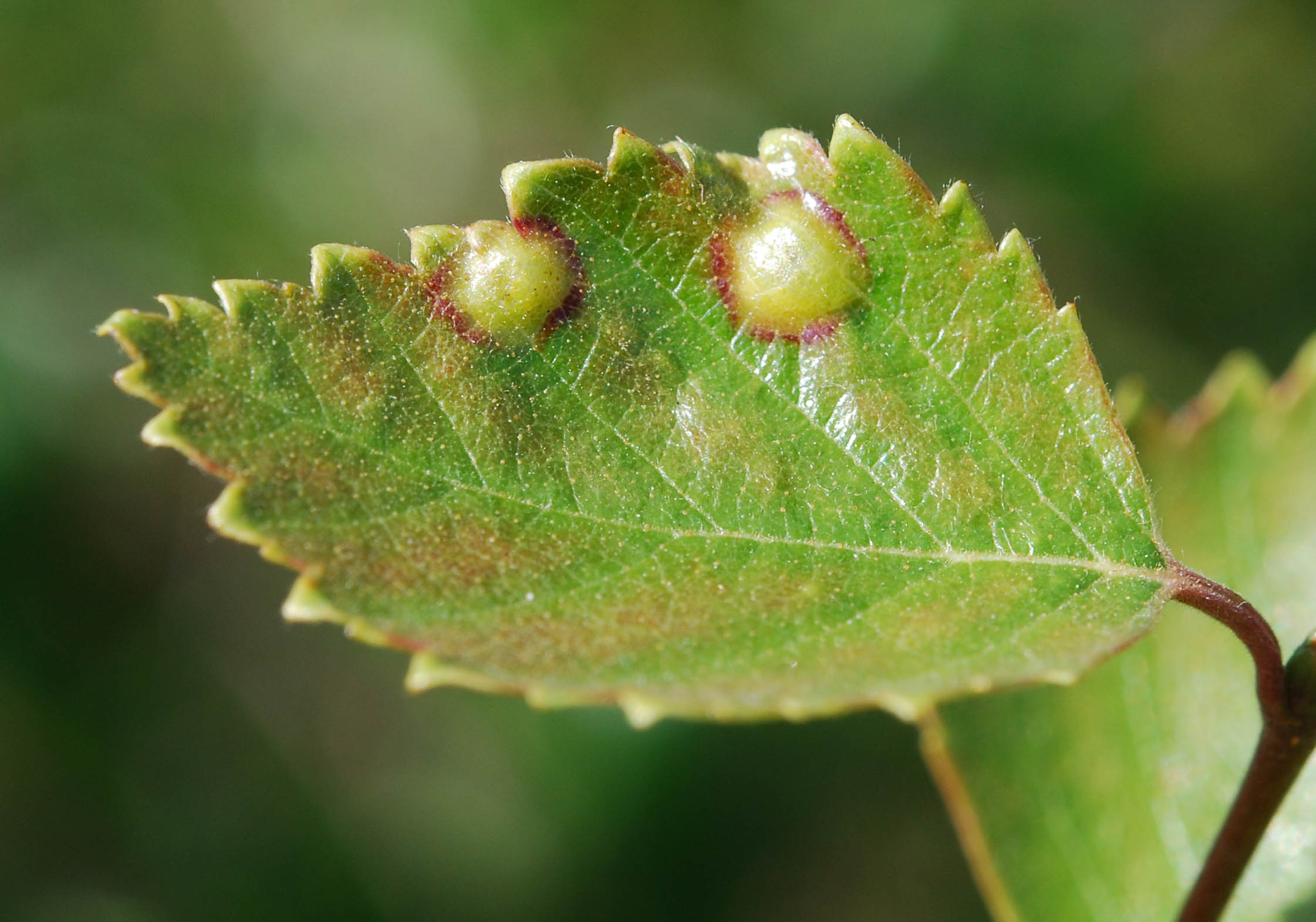 |
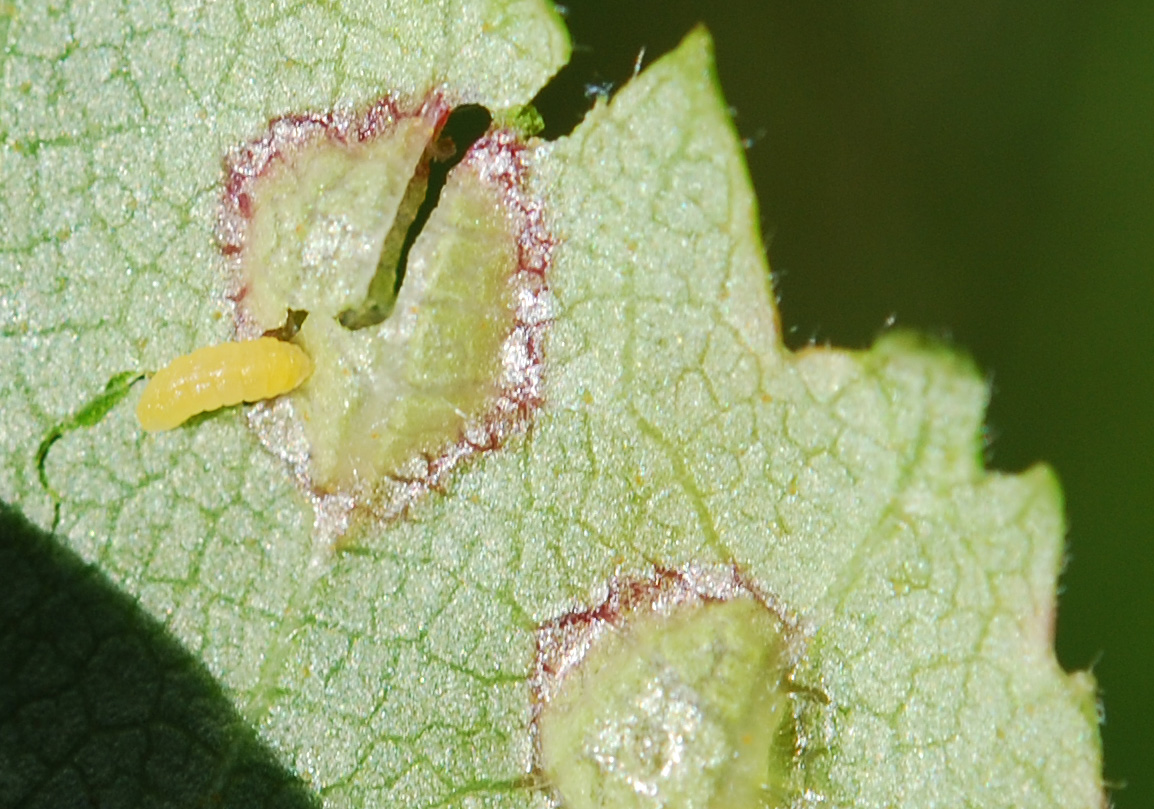 |
|
Blister galls of Anisostephus betulinus on a Betula pubescens leaf. |
Larva of Anisostephus betulinus removed from gall on Betula pubescens. |
|
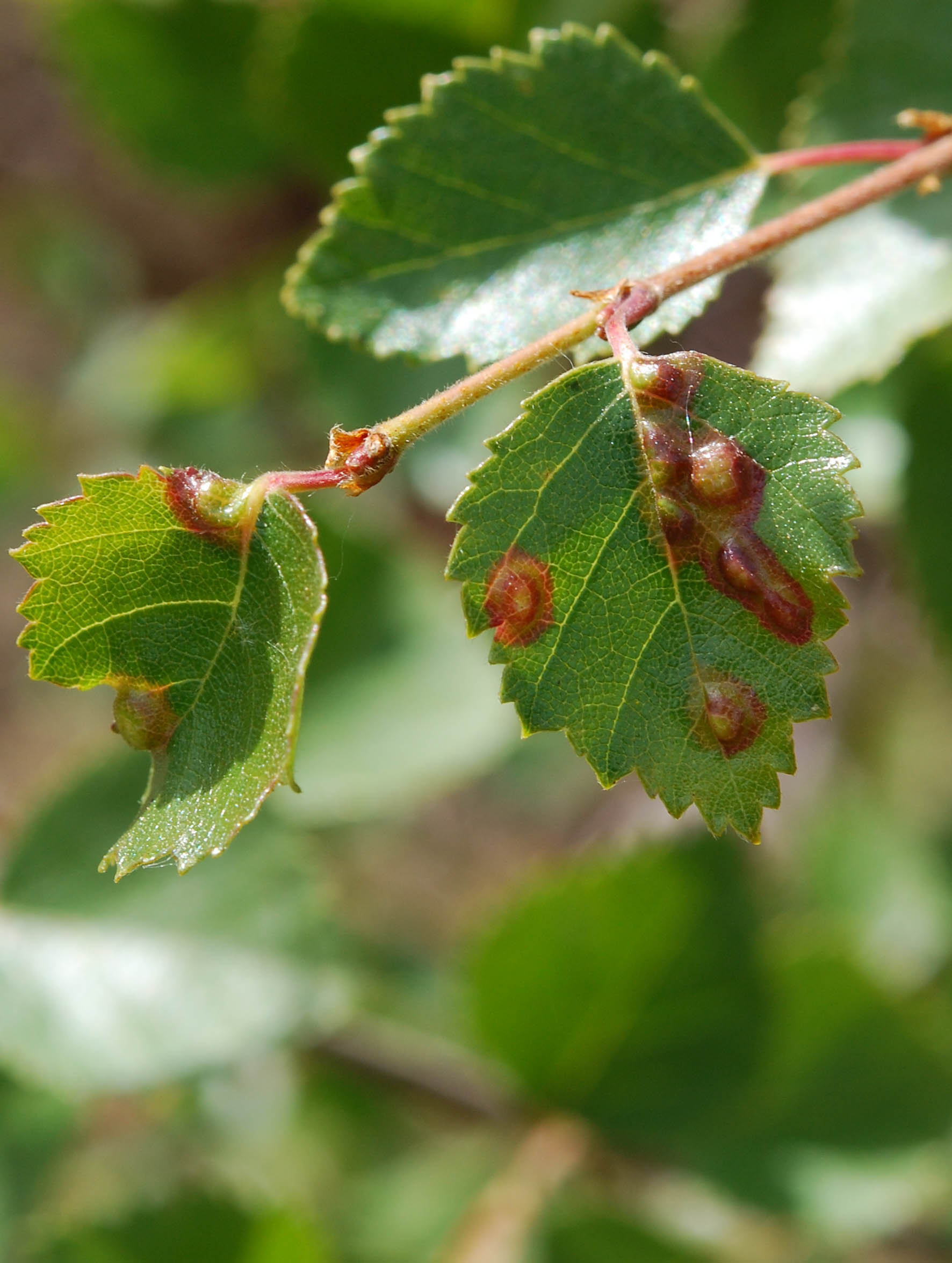 |
||
|
Serial blister galls of Anisostephus betulinus on mountain birch (Betula pubescens ssp. czerepanovii) in Norway. |
||
|
Moths (Lepidoptera: Heliozelidae and Tortricidae) Two moth species induce galls on birches. The galler-to-leafminer Heliozela hammoniella (below) causes inconspicuous thickenings on shoots. Larvae of the tortricid Epinotia tetraquetrana likewise initially feed inside spidle-shaped shoot galls, but then move on to feed between tied-together leaves or in leaf rolls. |
||
|
Heliozela hammoniella (Lepidoptera: Heliozelidae) Larvae of Heliozela hammoniella begin their development inside growing birch shoots that become thickened. Later, the larva bores through a petiole and becomes a leaf miner. In the autumn, the larva cuts out an oval disc from the leaf to make a shelter for pupation on the ground. The cut-out is not as regularly circular as the ones made by leaf-mining beetles and sawflies on birch leaves. |
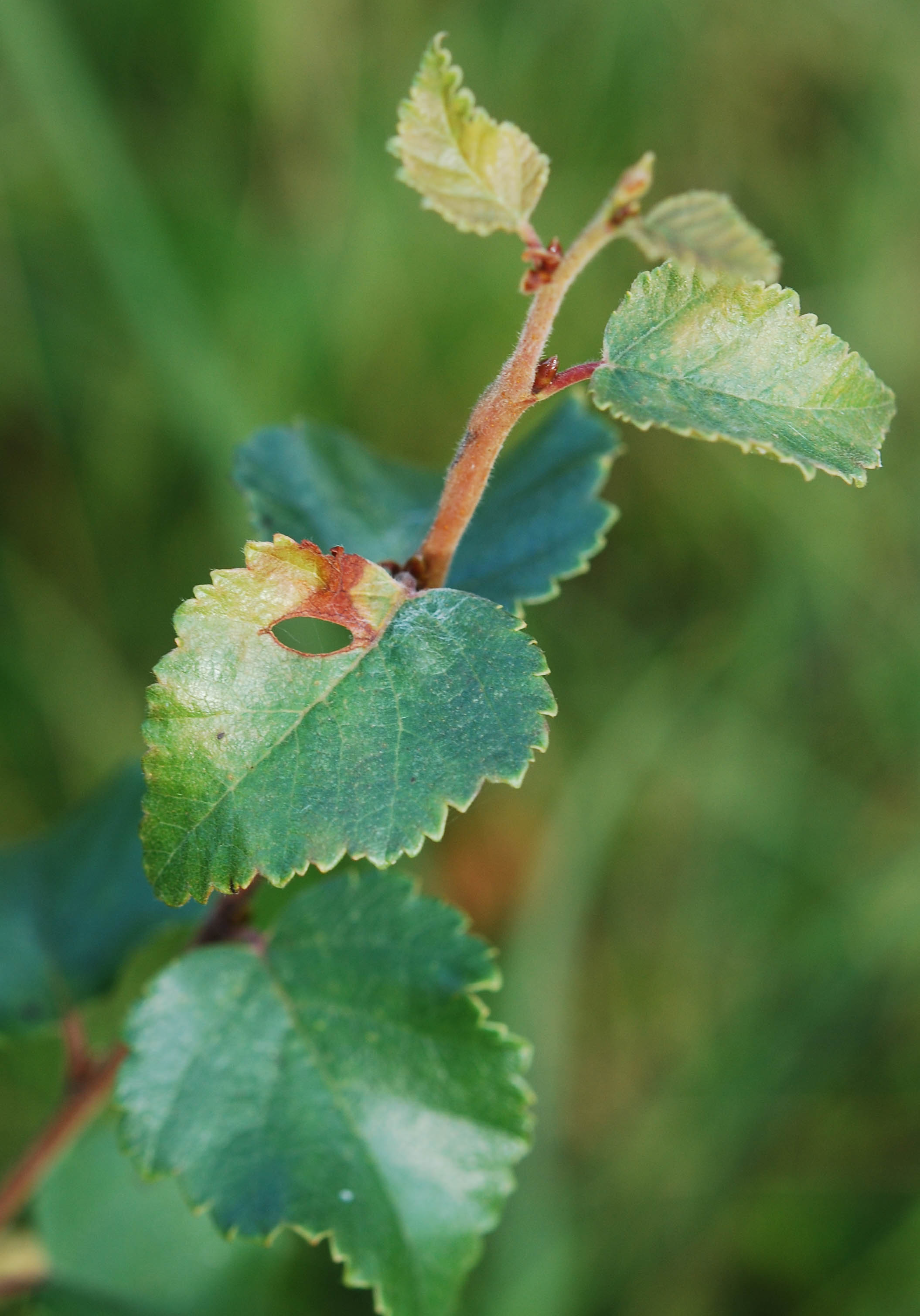 |
|
|
Shoot gall and vacated leaf mine of Heliozela hammoniella on a Betula pubescens sapling. |
||
|
Gall mites (Acari: Eriophyidae) Mites are not insects but arachnids, but they are included here because their galls resemble those induced by insects. The mites themselves are small and hardly visible without a magnifying glass or a microscope. |
||
|
Acalitus calycophthirus (Acari: Eriophyidae) Infestation by this mite species causes the transformation of Betula pubescens leaf buds into flower-like structures. The galls are ca. 1 cm long, and their pale "petals" are covered by soft, dense hair. On Betula pendula the same species induces larger and harder galls that can remain on twigs for several years. |
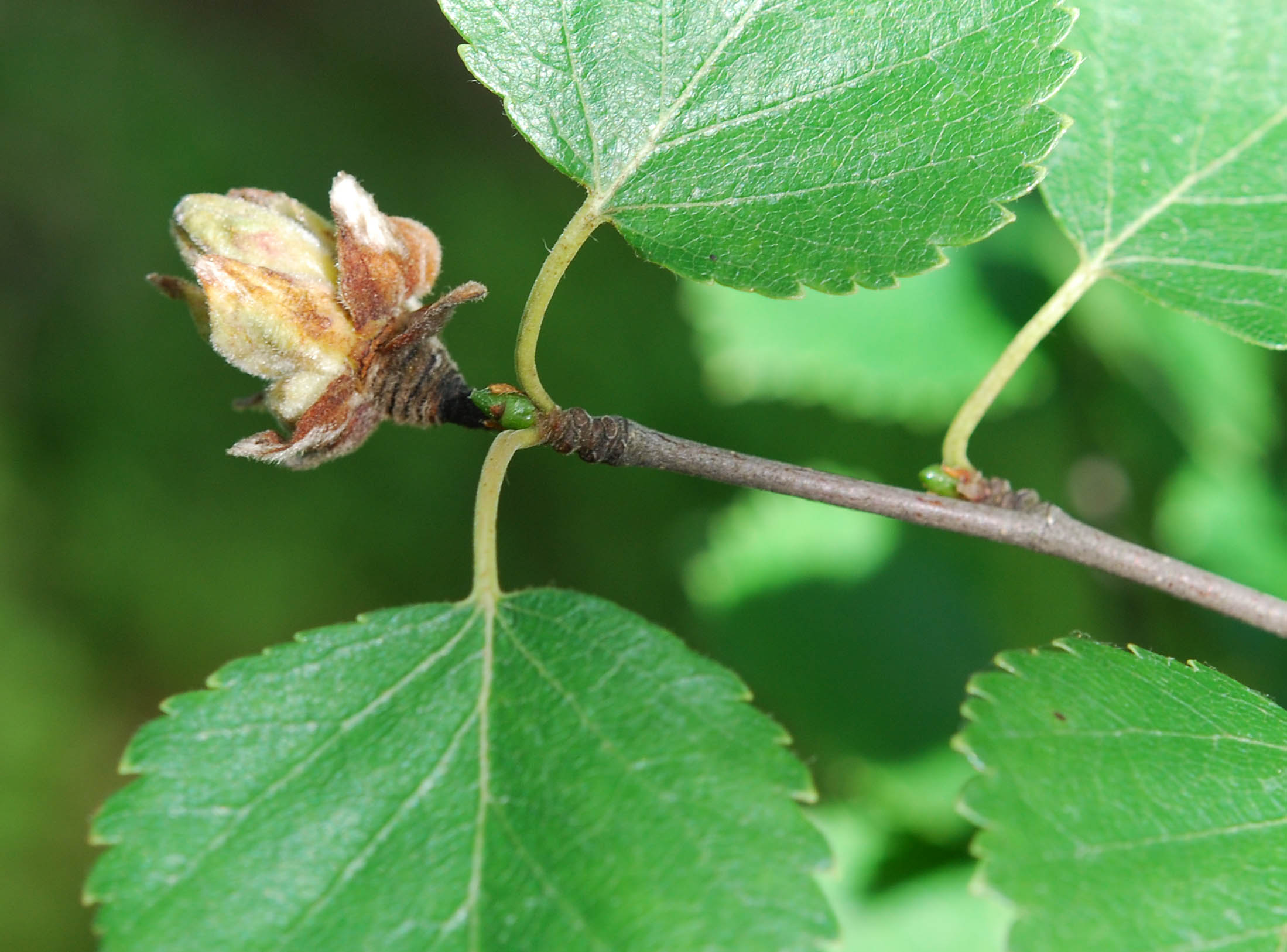 |
|
|
Acalitus calycophthirus on Betula pubescens. |
|
|
|
Eriophyes longisetosus (Acari: Eriophyidae) Eriophyes longisetosus forms a red "rash" on the upper surface of birch leaves. The minute mites feed between short hairs that form the felt-like covering. A few other mite species cause similar galls, but the coverings are paler and/or located on the underside of leaves. |
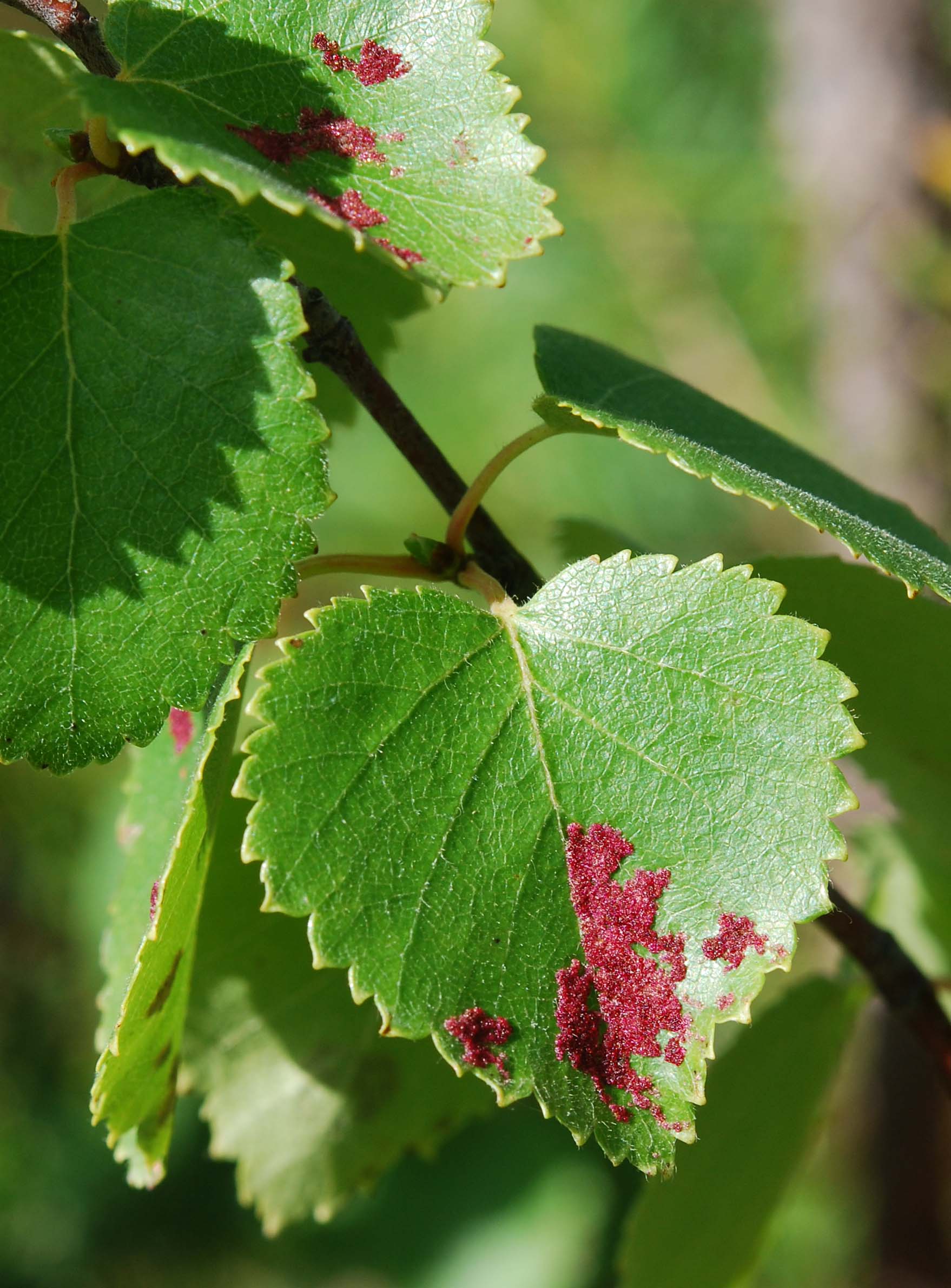 |
|
|
Eriophyes longisetosus gall on leaf of Betula pubescens. |
|
|